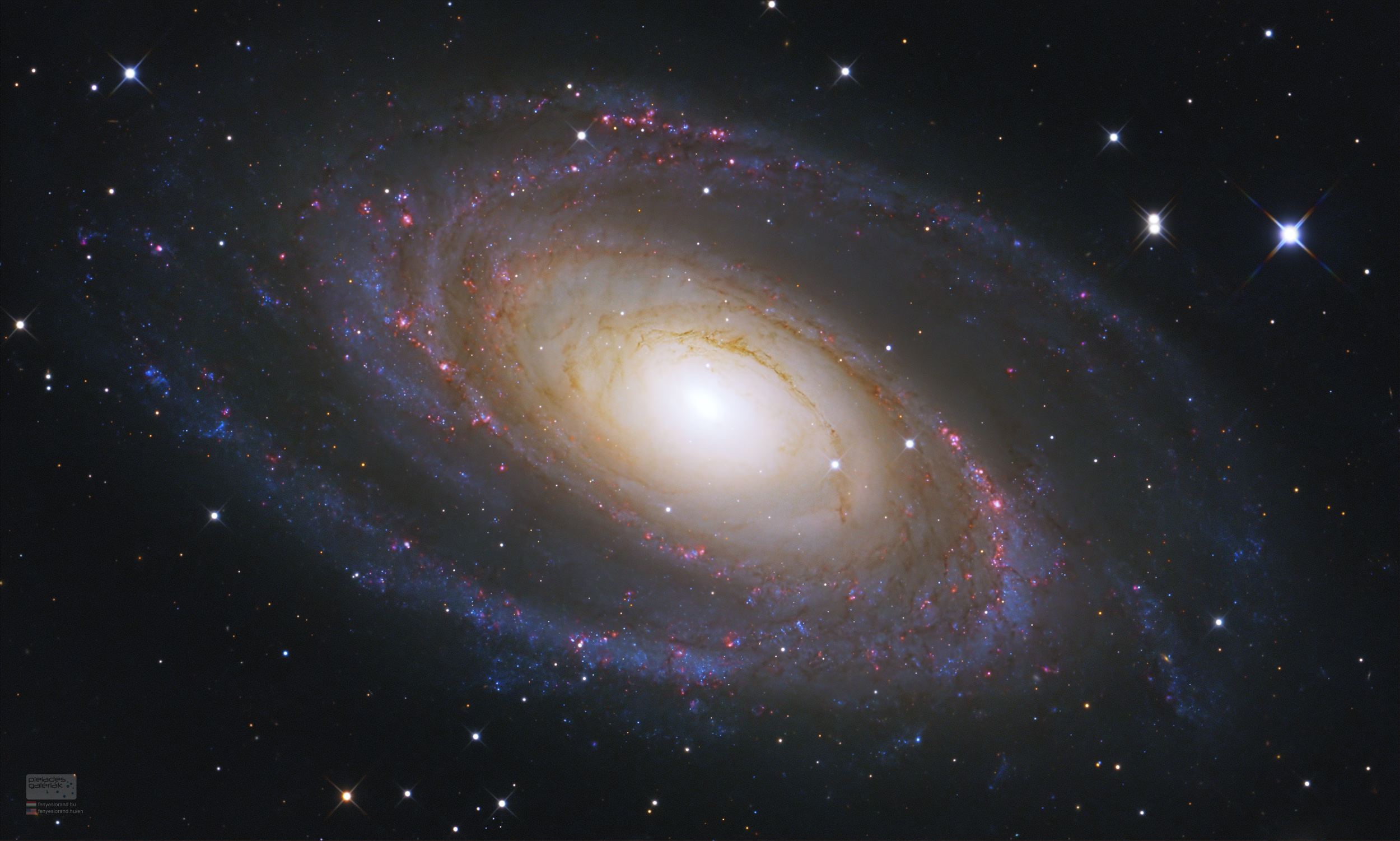
Posted on 03/27/2025 1:38:55 PM PDT by MtnClimber
Explanation: One of the brightest galaxies in planet Earth's sky is similar in size to our Milky Way Galaxy: big, beautiful Messier 81. Also known as NGC 3031 or Bode's galaxy for its 18th century discoverer, this grand spiral can be found toward the northern constellation of Ursa Major, the Great Bear. The sharp, detailed telescopic view reveals M81's bright yellow nucleus, blue spiral arms, pinkish starforming regions, and sweeping cosmic dust lanes. But some dust lanes actually cut across the galactic disk (left of center), contrary to other prominent spiral features. The errant dust lanes may be the lingering result of a close encounter between M81 and the nearby galaxy M82 lurking outside of this frame. Scrutiny of variable stars in M81 has yielded a well-determined distance for an external galaxy -- 11.8 million light-years.
For more detail go to the link and click on the image for a high definition image. You can then move the magnifying glass cursor then click to zoom in and click again to zoom out. When zoomed in you can scan by moving the side bars on the bottom and right side of the image.

🪐 🌟 🌌 🍔
Wow.
The pinkish “star-forming regions” look more like individual stars.
Bode’s Galaxy is named for Johann Elert Bode (1747-1826), for whom Bode’s law (about the distances between planets) is named. He is also responsible for the name Uranus for the seventh planet.
Gorgeous. That there’s the Raquel Welch of galazies, IMHO.
The orbit of Neptune is in violation of Bode’s law...but Bude’s law has no enforcement mechanism, so Neptune has gone unpunished.
M81 and M82 are wonderful together in a wide field eyepiece!

Disclaimer: Opinions posted on Free Republic are those of the individual posters and do not necessarily represent the opinion of Free Republic or its management. All materials posted herein are protected by copyright law and the exemption for fair use of copyrighted works.